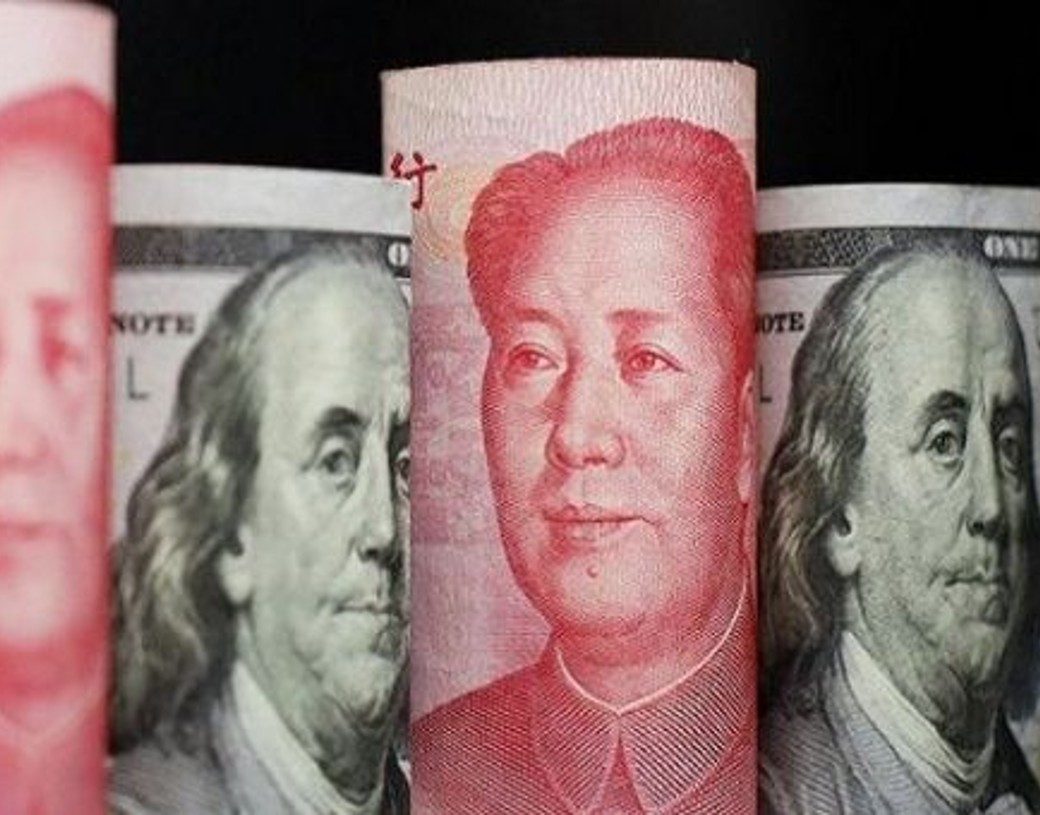China to bring reduced lending rates amid slowing economy growth

Share:
China is poised to implement substantial reductions to its fundamental lending rates this year. This move comes in response to increasing demands on policymakers and banks to counteract a declining growth trend and stimulate weakened demand within the globe’s second-largest economy.
The upcoming monthly assembly on Monday by the People’s Bank of China is expected to unveil decreases in one-year and five-year loan prime rates. These adjustments significantly impact the borrowing expenses for households and businesses. Notably, this follows the unexpected reduction of the same institution’s closely interconnected medium-term financing rate in the previous week.
China’s economy growing slowly
Following the easing of pandemic restrictions earlier this year, policymakers in Beijing have grappled with various obstacles. These include a deceleration in the property sector, diminished exports, notable levels of unemployment among the youth demographic, and a decline in consumer confidence leading to deflationary pressures.
The prevailing consensus among economists surveyed is that the one-year Loan Prime Rate (LPR), a key factor in mortgage lending, will experience a reduction of 15 basis points. This prospective adjustment represents the most significant change since January 2022. Similarly, a proportional cut to the five-year rate would mark the most substantial modification in a year. Currently, the LPR rates stand at 3.55 and 4.2 percent, respectively.
The economists surveyed were unanimous in their projections of an impending reduction in the Loan Prime Rate (LPR), a move typically synchronized with a decrease in the medium-term lending facility. Last week’s cut brought the Medium-Term Lending Facility (MLF) rate, responsible for managing liquidity in the banking sector, to its lowest point since its inception in 2014, now standing at 2.5 percent.
Despite a continuous stream of disappointing economic data over several months, Beijing still needs to implement substantial stimulus measures. This caution comes despite consumer prices slipping into deflationary terrain in July and a mere 0.8 percent growth in the second quarter compared to the preceding three months.
The situation has been aggravated by recent missed bond payments by real estate giant Country Garden and complications with savings products linked to the investment conglomerate Zhongzhi. These developments have heightened concerns among observers.
Goldman Sachs analysts conveyed their perspective on Saturday, asserting that the likelihood of systemic issues emerging in China remains low. Nevertheless, they acknowledged that spreads would likely remain volatile until macroeconomic volatility subsides. To address this, they suggested that a more coordinated effort to ease policies might be necessary from Chinese policymakers.
Diminished demand for credit in China
On Friday evening, China’s securities regulatory body unveiled reforms to enhance investment within its capital markets. These reforms encompass incentives for share buybacks intended to stabilize prices and reduce brokers’ transaction fees. Concurrently, the central bank has intensified its efforts to safeguard the renminbi’s value.
The Loan Prime Rate (LPR) is partially influenced by the lending rates established by China’s major banks. These banks are preparing to disclose their financial reports for the second quarter later this month. The one-year LPR, which experienced a ten basis point reduction in June, is particularly interesting. This rate has garnered significant attention due to its direct correlation with mortgage borrowing expenses.
Analysts from Nomura have foreseen additional reductions in the one-year Loan Prime Rate (LPR), predicting it to reach 2.35 percent by the year’s end. Simultaneously, they projected a 15 basis point decrease in the Medium-Term Lending Facility (MLF) rate, settling at 2.35 percent.
However, the analysts emphasized that the fundamental concern underlying the ongoing growth slowdown is not primarily the insufficient supply of available loan funds but rather the diminished demand for credit. Their assessment suggested that Beijing might eventually be compelled to implement more comprehensive measures to counteract this downward trajectory.
Meanwhile, the real estate sector in China, traditionally accountable for driving over a quarter of economic activity, has been severely impacted by a liquidity crisis spanning the last two years. This crisis was exacerbated by the 2021 default of Evergrande, the world’s most indebted property developer. Last week, Evergrande filed for bankruptcy protection in the United States as part of an extensive restructuring process.
China to bring reduced lending rates amid slowing economy growth

Share:
China is poised to implement substantial reductions to its fundamental lending rates this year. This move comes in response to increasing demands on policymakers and banks to counteract a declining growth trend and stimulate weakened demand within the globe’s second-largest economy.
The upcoming monthly assembly on Monday by the People’s Bank of China is expected to unveil decreases in one-year and five-year loan prime rates. These adjustments significantly impact the borrowing expenses for households and businesses. Notably, this follows the unexpected reduction of the same institution’s closely interconnected medium-term financing rate in the previous week.
China’s economy growing slowly
Following the easing of pandemic restrictions earlier this year, policymakers in Beijing have grappled with various obstacles. These include a deceleration in the property sector, diminished exports, notable levels of unemployment among the youth demographic, and a decline in consumer confidence leading to deflationary pressures.
The prevailing consensus among economists surveyed is that the one-year Loan Prime Rate (LPR), a key factor in mortgage lending, will experience a reduction of 15 basis points. This prospective adjustment represents the most significant change since January 2022. Similarly, a proportional cut to the five-year rate would mark the most substantial modification in a year. Currently, the LPR rates stand at 3.55 and 4.2 percent, respectively.
The economists surveyed were unanimous in their projections of an impending reduction in the Loan Prime Rate (LPR), a move typically synchronized with a decrease in the medium-term lending facility. Last week’s cut brought the Medium-Term Lending Facility (MLF) rate, responsible for managing liquidity in the banking sector, to its lowest point since its inception in 2014, now standing at 2.5 percent.
Despite a continuous stream of disappointing economic data over several months, Beijing still needs to implement substantial stimulus measures. This caution comes despite consumer prices slipping into deflationary terrain in July and a mere 0.8 percent growth in the second quarter compared to the preceding three months.
The situation has been aggravated by recent missed bond payments by real estate giant Country Garden and complications with savings products linked to the investment conglomerate Zhongzhi. These developments have heightened concerns among observers.
Goldman Sachs analysts conveyed their perspective on Saturday, asserting that the likelihood of systemic issues emerging in China remains low. Nevertheless, they acknowledged that spreads would likely remain volatile until macroeconomic volatility subsides. To address this, they suggested that a more coordinated effort to ease policies might be necessary from Chinese policymakers.
Diminished demand for credit in China
On Friday evening, China’s securities regulatory body unveiled reforms to enhance investment within its capital markets. These reforms encompass incentives for share buybacks intended to stabilize prices and reduce brokers’ transaction fees. Concurrently, the central bank has intensified its efforts to safeguard the renminbi’s value.
The Loan Prime Rate (LPR) is partially influenced by the lending rates established by China’s major banks. These banks are preparing to disclose their financial reports for the second quarter later this month. The one-year LPR, which experienced a ten basis point reduction in June, is particularly interesting. This rate has garnered significant attention due to its direct correlation with mortgage borrowing expenses.
Analysts from Nomura have foreseen additional reductions in the one-year Loan Prime Rate (LPR), predicting it to reach 2.35 percent by the year’s end. Simultaneously, they projected a 15 basis point decrease in the Medium-Term Lending Facility (MLF) rate, settling at 2.35 percent.
However, the analysts emphasized that the fundamental concern underlying the ongoing growth slowdown is not primarily the insufficient supply of available loan funds but rather the diminished demand for credit. Their assessment suggested that Beijing might eventually be compelled to implement more comprehensive measures to counteract this downward trajectory.
Meanwhile, the real estate sector in China, traditionally accountable for driving over a quarter of economic activity, has been severely impacted by a liquidity crisis spanning the last two years. This crisis was exacerbated by the 2021 default of Evergrande, the world’s most indebted property developer. Last week, Evergrande filed for bankruptcy protection in the United States as part of an extensive restructuring process.











